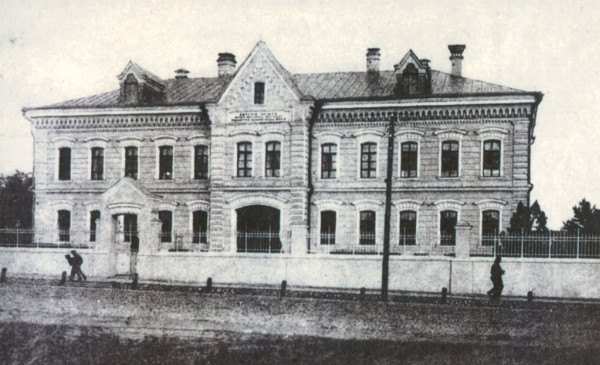Zemstvo schools
Zemstvo schools [земські школи; zemski shkoly]. Elementary schools and, later, secondary schools and vocational schools in the Russian Empire, established and financed by zemstvo authorities. Zemstvo schools were established in 1864 in the wake of the agrarian reform and existed until the Revolution of 1917. They played a significant role in democratizing and improving the quality of public education, particularly in the villages. In general, reactionary forces in the tsarist government and the Holy Synod disapproved of the work done by zemstvos in the sphere of public education. Zemstvo schools compared favorably both with schools run by the Ministry of Education and with parochial schools. The literacy rate was 19.9 percent in 1897 in zemstvo gubernias, and 16.9 percent in non-zemstvo gubernias. Though the zemstvo authorities had the sole responsibility for the organizing and funding of zemstvo schools, the administration of the schools was entirely in the hands of the central government. The zemstvos had no direct jurisdiction over curriculum, teaching methods, or hiring practices. Zemstvo representatives were outnumbered on the district and gubernia school councils created by the state to supervise the zemstvo schools. In 1874 the zemstvos were granted the right to nominate candidates for teaching positions in zemstvo schools. District zemstvos were responsible for the founding of elementary zemstvo schools, and gubernia zemstvos did the organized training courses for teachers, founded museums, libraries, and bookstores to serve zemstvo teachers, and established professional zemstvo schools. In 1898 there were 3,117 zemstvo schools in Ukraine. The figure increased in the period 1900–10 to 4,700 schools, with 460,000 pupils and 8,458 teachers. In 1914, in Tavriia gubernia there were 827 zemstvo schools, in Kherson gubernia, 1,087, in Kharkiv gubernia, 1,248, and in Katerynoslav gubernia, 945. In Right-Bank Ukraine, where the zemstvo structure was not introduced until 1911, the numbers were much lower. By 1912, in Kyiv gubernia there were 149 zemstvo schools, and in Podilia gubernia and Volhynia gubernia, only a few isolated schools. Because their formation depended on local initiative, zemstvo schools were often unevenly distributed.
Initially zemstvo schools had a three-year program. In the 1890s a fourth year was added, and by the time zemstvo schools were abolished in 1917, some seven-year schools had been established. The curriculum consisted of religion, reading, writing, arithmetic, and sometimes singing. Texts used at the zemstvo schools were superior to those used at their Ministry of Education and parochial school counterparts and included the primer Rodnoe slovo ([Our] Native Language) by Konstantin Ushinsky, the primer Azbuka (Alphabet) and simple readers by Leo Tolstoy, and Nash drug (Our Friend) by Nikolai Korf. Both Ushinsky, a well-known teacher, and Korf, a landowner in Oleksandriia county, Kherson gubernia, were instrumental in the establishment of zemstvo schools. Korf pioneered the economical one-room school system in which a single teacher taught pupils of all ages in a single classroom. Between 1867 and 1872 Korf founded 80 new zemstvo schools in his gubernia.
Although most zemstvo schools were elementary schools, zemstvos at the gubernia level also founded some professional schools. Among them were the Industrial Arts and Ceramics School in Myrhorod and vocational schools in Novomoskovsk and Poltava. In the 1870s a zemstvo seminary to train teachers (see Teachers' seminaries) was founded in Chernihiv, but it was closed in 1878 at the insistence of the Ministry of Education. Some zemstvos also established gymnasiums. The first was the Hlukhiv county zemstvo progymnasium, founded in the 1860s, which became a gymnasium in 1876.
County and gubernia zemstvos often came into conflict with the government over the use of Ukrainian in zemstvo schools. In 1870 zemstvo activist M. Konstantynovych raised the language issue at a meeting of the Chernihiv district zemstvo. It was broached again in 1881, at a session of the Chernihiv gubernia zemstvo, by Nikolai Korf. In 1895 the Yelysavethrad zemstvo discussed the use of Ukrainian. In 1904–5, zemstvos passed resolutions concerning the Ukrainian language, but these were rejected by the government. Teachers who used Ukrainian as a teaching aid in zemstvo schools were dismissed.
Chrystia Freeland, Stepan Siropolko
[This article originally appeared in the Encyclopedia of Ukraine, vol. 5 (1993).]

